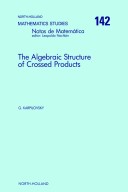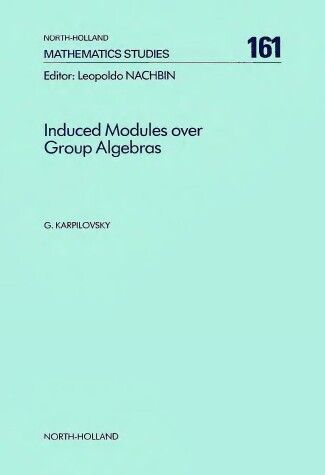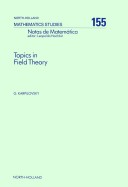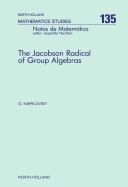Mathematics Studies
4 total works
In the past 15 years, the theory of crossed products has enjoyed a period of vigorous development. The foundations have been strengthened and reorganized from new points of view, especially from the viewpoint of graded rings. The purpose of this monograph is to give, in a self-contained manner, an up-to-date account of various aspects of this development, in an effort to convey a comprehensive picture of the current state of the subject. It is assumed that the reader has had the equivalent of a standard first-year graduate course, thus familiarity with basic ring-theoretic and group-theoretic concepts and an understanding of elementary properties of modules, tensor products and fields. A chapter on algebraic preliminaries is included, which briefly surveys topics required later in the book.
In 1898 Frobenius discovered a construction which, in present terminology, associates with every module of a subgroup the induced module of a group. This construction proved to be of fundamental importance and is one of the basic tools in the entire theory of group representations. This monograph is designed for research mathematicians and advanced graduate students and gives a picture of the general theory of induced modules as it exists at present. Much of the material has until now been available only in research articles. The approach is not intended to be encyclopedic, rather each topic is considered in sufficient depth that the reader may obtain a clear idea of the major results in the area. After establishing algebraic preliminaries, the general facts about induced modules are provided, as well as some of their formal properties, annihilators and applications. The remaining chapters include detailed information on the process of induction from normal subgroups, projective summands of induced modules, some basic results of the Green theory with refinements and extensions, simple induction and restriction pairs and permutation modules.
This monograph gives a systematic account of certain important topics pertaining to field theory, including the central ideas, basic results and fundamental methods. Avoiding excessive technical detail, the book is intended for the student who has completed the equivalent of a standard first-year graduate algebra course. Thus it is assumed that the reader is familiar with basic ring-theoretic and group-theoretic concepts. A chapter on algebraic preliminaries is included, as well as a fairly large bibliography of works which are either directly relevant to the text or offer supplementary material of interest.
Let G be a finite group and let F be a field. It is well known that linear representations of G over F can be interpreted as modules over the group algebra FG. Thus the investigation of ring-theoretic structure of the Jacobson radical J(FG) of FG is of fundamental importance. During the last two decades the subject has been pursued by a number of researchers and many interesting results have been obtained. This volume examines these results. The main body of the theory is presented, giving the central ideas, the basic results and the fundamental methods. It is assumed that the reader has had the equivalent of a standard first-year graduate algebra course, thus familiarity with basic ring-theoretic and group-theoretic concepts and an understanding of elementary properties of modules, tensor products and fields. A chapter on algebraic preliminaries is included, providing a survey of topics needed later in the book. There is a fairly large bibliography of works which are either directly relevant to the text or offer supplementary material of interest.



